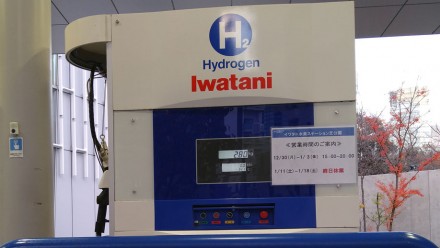Green hydrogen at A$2/kg plausible over the next decade: ANU paper
The rapidly falling cost of renewable energy generation means that it is plausible that “green hydrogen” produced through electrolysis could approach the Australian Government’s ‘stretch goal’ of H2 at A$2/kg over the next decade, a new paper by researchers at The Australian National University has found.
Over recent years the cost of electricity from solar PV and wind have fallen dramatically, and further reductions are expected. This will have implications for industries that use large amounts of electricity.
“Given rapid past reductions in renewable energy supply costs and the prospect of sustained reductions in electrolyser capital costs, the production of green hydrogen at costs of below A$3/kg is likely to be possible, and a reduction of production costs over the next decade to approach A$2/kg is plausible,” the paper said.
“Australia is well placed to achieve low-cost green hydrogen production due to its low-cost renewable energy supply and the potential to achieve large economies of scale.”
The paper, Green hydrogen production costs in Australia: implications of renewable energy and electrolyser costs, takes stock of the declines in renewable energy costs since 2010 and compares projections for up to and including 2050.
It analyses the costs of producing hydrogen through electrolysis for different electricity cost and capital cost levels. It also accounts for different capacity factors.
The authors, Dr Thomas Longden, Prof Frank Jotzo, Dr Mousami Prasad and Richard Andrews, are members of the ANU Grand Challenge: Zero-Carbon Energy for the Asia-Pacific Grand Challenge, who are based at the Crawford School of Public Policy.
The paper was developed to help inform current analysis about the likely future cost competitiveness of green hydrogen, and could be of use to international and Australian assessments.
Australia is one of several countries considering the creation of a hydrogen production, use and export industry. Germany, Japan and South Korea have all expressed interest in becoming importers of hydrogen.
“Whether hydrogen is produced from renewable electricity or fossil fuels matters, because although using fossil fuels is currently cheaper, it could end up emitting substantial amounts of carbon dioxide,” Dr Longden said.
“Australia could be well placed to achieve low-cost green hydrogen production if we build up a low-cost renewable energy supply and achieve economies of scale.”
The paper uses recent cost estimates and projections to develop plausible ranges for the production cost of green hydrogen.
The typical up-front capital costs for solar photovoltaic installations fell by 79 percent from 2010 to 2019 and by 24 percent for onshore wind generators.
The cost of electricity is a major cost component in the production of hydrogen via electrolysis. Capital costs and capacity factors are also important. Other factors, including land, labour, and water, are less influential and do not add much to the overall production cost of hydrogen.
Electrolyser manufacturing costs could fall substantially if demand for electrolysers increases.
“Green hydrogen production at or below A$3/kg will be possible soon or could already be possible, and green hydrogen production costs in the vicinity of A$2/kg may well come within reach in coming years,” the paper said.
Lead author Dr Longden said the researchers’ analysis did not assess the competitiveness of hydrogen with other fuels and energy carriers.
“While we did not address green hydrogen’s likely cost competitiveness with fossil-fuel based hydrogen production, some recent assessments have indicated a convergence with fossil-fuel based alternatives as green hydrogen costs come down.
“Our focus was on specifying the influence of declining renewable energy costs and the impact on the costs of producing hydrogen through electrolysis. Future work will include a comparison of green hydrogen costs and fossil-fuel based options.
“The cost of making hydrogen from Steam Methane Reforming, a common fossil fuel-based method, would rise if the cost of natural gas increased or if carbon pricing were introduced.”











